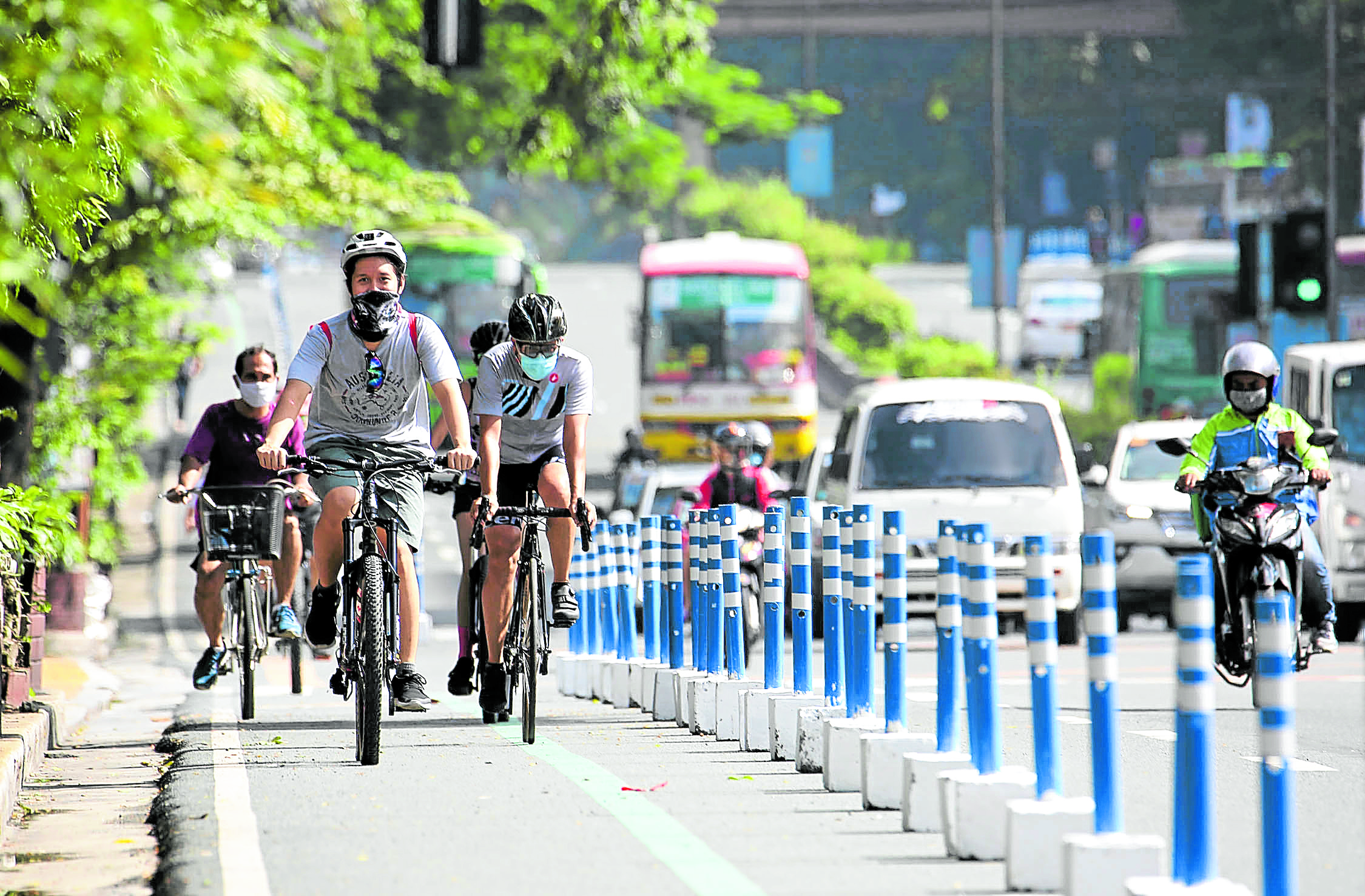Wide sidewalks, bike lanes make cities safe

BIKE LANE As the number of bikers surged during the months-long lockdown, the Quezon City government allotted a separate lane for them on East Avenue for their own safety in this Aug. 23, 2020, file photo. —NIÑO JESUS ORBETA
MANILA, Philippines — In September last year, freelance photographer and writer Lester Babiera created First Bike Ride, an online community for cycling beginners amid an emerging bike culture among Filipinos having to deal with limited public transport during the pandemic.
First Bike Ride (@firstbikeride) advocates inclusive cycling, highlighting experiences of bikers from all walks of life across the country. Through its social media posts, the platform tells the challenges faced by bikers, from newbies to veterans, vendors, fitness enthusiasts and even the deaf.
Strong support
It shares biking tips and compiles bike-friendly establishments in Metro Manila and nearby provinces, as well as spaces with available bike parking.
According to a recent Social Weather Stations (SWS) survey, an overwhelming majority of adult Filipinos expressed strong support for cycling, as well as walking, and roads that give priority to public and active transport.
The Nov. 21 to 25 nationwide survey last year, commissioned by the Department of Health, asked 1,500 adult respondents about public and alternative forms of transportation being implemented during the period.
Article continues after this advertisementIt found 87 percent of the respondents agreeing that “the roads in Philippine cities and municipalities will be better off if public transportation, bicycles and pedestrians are given priority over private vehicles,” while only 6 percent disagreed for a very strong net agreement of +81.
Article continues after this advertisementEighty-five percent also agreed that it was possible for their city or municipality to become a great place for walking and cycling, while 8 percent disagreed, resulting in a “very strong” net agreement score of +77.
The survey had a margin of error of plus-or-minus 2.5 percent for national percentages, plus-or-minus 6 percent for Metro Manila, Visayas and Mindanao, and plus-or-minus 4 percent for Luzon outside Metro Manila.
Local gov’t priority
Net agreement with the statement that public and active transport should be given priority was higher in the Visayas (+88) and Metro Manila (+85) compared with Mindanao (+80) and Luzon outside Metro Manila (+78).
By socioeconomic class, support for public and alternative forms of transportation was higher among Classes D (+83) and ABC (+82) than among Class E (+74).
Support for making cities and town biking- and walking- friendly was higher in Visayas (+85) than in Luzon outside Metro Manila (+82) Metro Manila (+75) and Mindanao (+62).
By class, it was higher among Class ABC (+91) than among Classes D (+78) and E (+68).
Babiera said wide sidewalks and protected bike lanes were important factors in making a community a great and safe place for bikers and pedestrians.
“Roads designed for pedestrians and cyclists are important. For me, they should be the priority when we build transportation infrastructure because they are the most vulnerable road users,” he said.
Babiera turned to biking as a way to move around the metropolis during the pandemic.
By creating First Bike Ride, he said he wanted to raise awareness about cycling and encourage people to bike. He believed that better roads would follow when more people use bikes.
“If more people use bikes, the government will be pressured to fix the roads. Now, with more people cycling, bike lanes were created and motorists are becoming more educated about pedestrians and bikers,” Babiera said. INQ